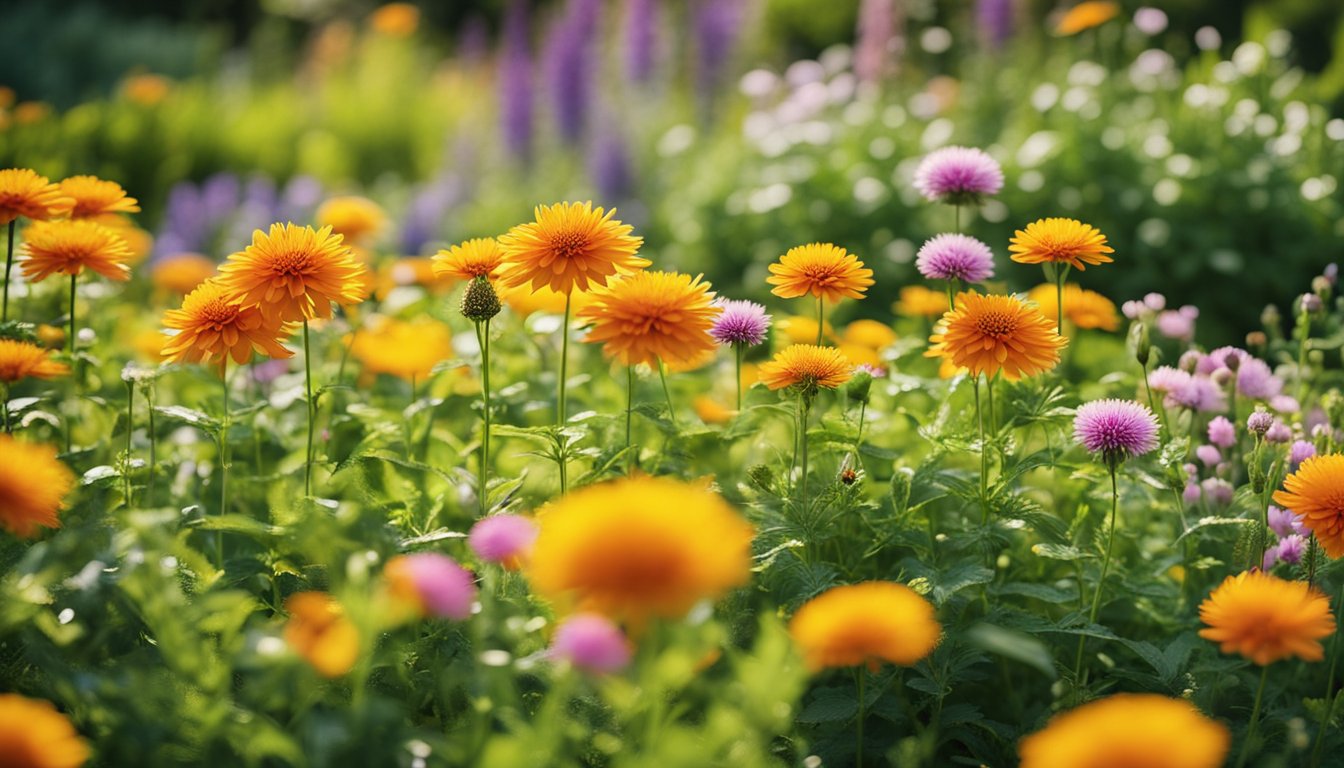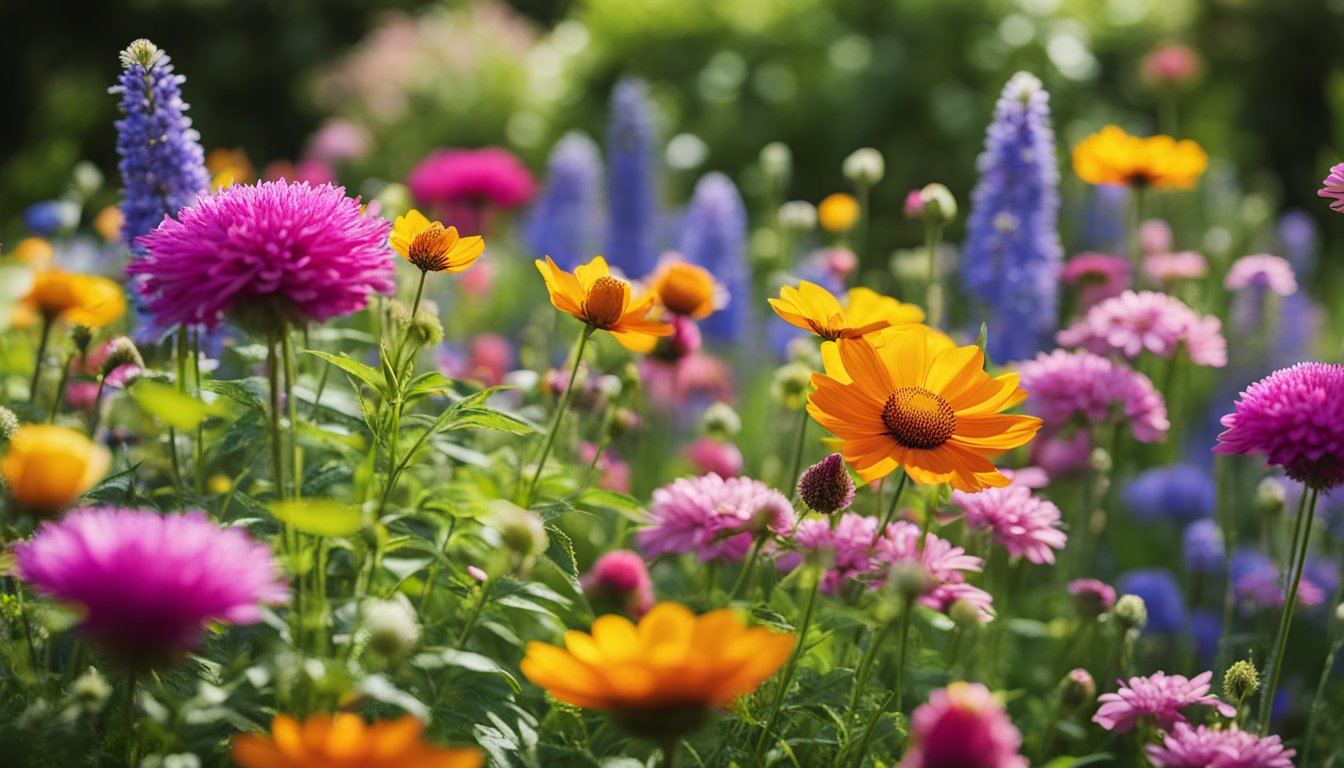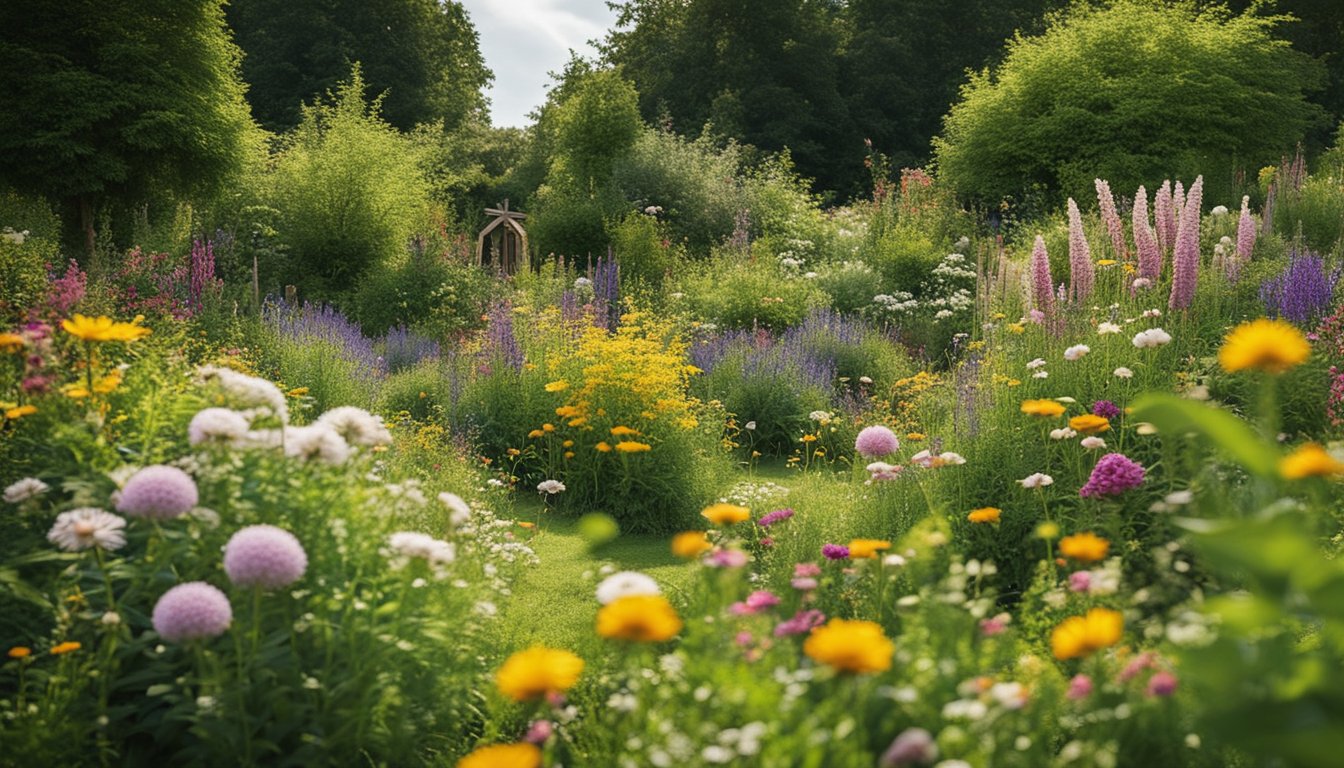Late updated: 24 Feb 2025 15:02
Written by: Emily Thornton
Maximising Garden Beauty With UK Native Annuals: Enhance Your Outdoor Space
Creating a garden filled with UK native annuals is a beautiful way to enhance your outdoor space while supporting local biodiversity. By selecting annuals that naturally thrive in the UK's diverse climate, we not only add bursts of vibrant colour but also create a wildlife-friendly garden that attracts pollinators. Our gardens become dynamic ecosystems, alive with fluttering wings and the hum of visiting bees.

Native annuals have adapted to thrive in specific regional conditions, offering robustness and extraordinary beauty. They require less maintenance and can withstand various environmental challenges. Incorporating these plants is not only an aesthetic choice; it's an environmental one too, fostering a harmonious relationship between our gardens and the endearing wildlife they sustain.
Exploring the wide array of UK native annuals available opens up a world of possibilities. As we choose and care for these plants, we contribute to a more sustainable future. Our choices in the garden directly influence the local ecosystem, inviting diverse species to thrive in our very own backyards.
Key Takeaways
- UK native annuals enhance garden beauty and sustain biodiversity.
- Choose plants suited to local conditions for a thriving, low-maintenance garden.
- Caring for these plants supports a balanced, vibrant ecosystem.
Selecting Native Annuals for Your Garden
Choosing native annuals for your UK garden can enhance its beauty while supporting local wildlife. By focusing on soil and sunlight needs, picking visually appealing plants, and encouraging wildlife, we can create a vibrant and sustainable garden.
Understanding Soil and Sunlight Requirements
Different UK native annuals have specific soil and sunlight needs. Well-drained soil is generally essential, especially for plants like echium vulgare or sea thrift (armeria maritima). It's crucial to determine whether your garden offers full sun or partial shade conditions.
Full sun is ideal for hardy annuals such as sunflower (helianthus annuus) and papaver species. If parts of your garden are shaded, consider plants like digitalis purpurea. The adaptability of these plants means they not only beautify your space but also thrive with regular watering and appropriate soil conditions.
Top Picks for Maximum Appeal
When selecting plants, some UK native annuals stand out for both aesthetics and hardiness. Nigella damascena, commonly known as love-in-a-mist, brings a delicate touch with its fine foliage and vibrant flowers. Orlaya grandiflora and ammi majus add elegance with their intricate blooms.
For something more eye-catching, the vivid reds of papaver commutatum are stunning. Plants like poached egg plant (limnanthes douglasii) can bring cheerful colours and an adaptable nature. Additionally, the rhodanthe chlorocephala, known for its charming paper-like petals, is another choice that holds the Royal Horticultural Society's Award of Garden Merit (AGM).
Encouraging Wildlife With Native Annuals
Our selection doesn't just aim for beauty but also supports local wildlife. Native plants such as dog rose (rosa canina) attract a variety of pollinators, creating a lively, ecosystem-friendly space. By planting helianthus annuus, we can draw in birds that enjoy the seeds.
Consider bluebells (hyacinthoides non-scripta) to offer a springtime carpet of colour while providing nectar for early pollinators. Long-lasting blooms of sea thrift can attract bees throughout their flowering season. By incorporating these plants, our gardens become not just an aesthetic destination but a thriving hub for a range of wildlife.
Caring for Your Native Annuals

We emphasise the importance of carefully considering planting and maintenance methods for UK native annuals to ensure a thriving and biodiverse garden. By integrating key practices, we can support both plant health and local wildlife.
Planting and Maintenance Tips
When planting native annuals, selecting the right location is crucial. For instance, species like the annual sunflower flourish in full sun, while others such as wood anemone thrive in partial shade. Prioritise planting where conditions align with these preferences to optimise growth.
Soil type plays a significant role. Most UK native annuals prefer well-drained soil, although some like lavatera may tolerate heavier soils. Adding organic matter like compost can enhance soil quality. Regular watering, especially during dry periods, helps maintain health and vigour.
Proper maintenance includes timely pruning and monitoring for pests. Annuals like climbers may benefit from a support structure, while species like crataegus monogyna and hawthorn might require trimming to maintain shape. Mulching can aid moisture retention and discourage weeds.
Sustaining Biodiversity Through Garden Practices
Native annuals support biodiversity by enhancing habitats for local wildlife. Incorporating a variety of plants, such as english oak and quercus robur, can create layers that benefit different species. Trees like silver birch and betula pendula add vertical diversity, which attracts different animals.
Setting up native hedges with blackthorn and rosehips provides both cover and food sources. These hedges contribute to a thriving ecosystem, supporting various birds and insects. The inclusion of anemone nemorosa can attract early pollinators, acting as a foundation for a vibrant garden.
By selecting a diverse range of native plants, we can increase the overall health of our garden's ecosystem. Such practices not only contribute to the well-being of native species but also add to the aesthetic and environmental value.
Frequently Asked Questions

Incorporating UK native annuals can transform our gardens into vibrant, sustainable landscapes. Let’s explore ways to choose, plant, and maintain these beauties, ensuring year-round appeal.
Which UK native annual plants are best for enhancing garden aesthetics?
Some popular choices include cornflower (Centaurea cyanus), field poppy (Papaver rhoeas), and oxeye daisy (Leucanthemum vulgare). Each offers unique colours and forms. Together, they create a stunning visual impact.
How can one cultivate a variety of native British wildflowers to achieve maximum visual impact?
To maximise visual impact, we recommend planting in clusters. This enhances colour density and attracts pollinators. Using a mix of species can provide different heights and textures for a fuller look.
What is the ideal planting season for UK native annuals to ensure a beautiful garden throughout the year?
The best time for planting is typically in spring. This allows the plants to establish themselves as temperatures rise. For continuous blooms, consider sowing in succession.
Could you list some native British plants and flowers that contribute to a diverse and attractive garden?
Apart from the popular cornflower, consider cowslip (Primula veris), and meadowsweet (Filipendula ulmaria). These species add diversity and charm to our gardens.
How can I identify native UK wildflowers suited for my local environment?
Identifying suitable wildflowers involves understanding soil type and climate. Local garden centres often provide region-specific advice. Consulting resources like local wildlife trusts can also be helpful.
What are the key considerations for selecting and arranging UK native plants to create a picturesque outdoor space?
We need to consider plant height, bloom time, and colour palette. Arranging taller plants at the back with shorter ones at the front can create depth. Mixing perennials with annuals provides structure and variety.
